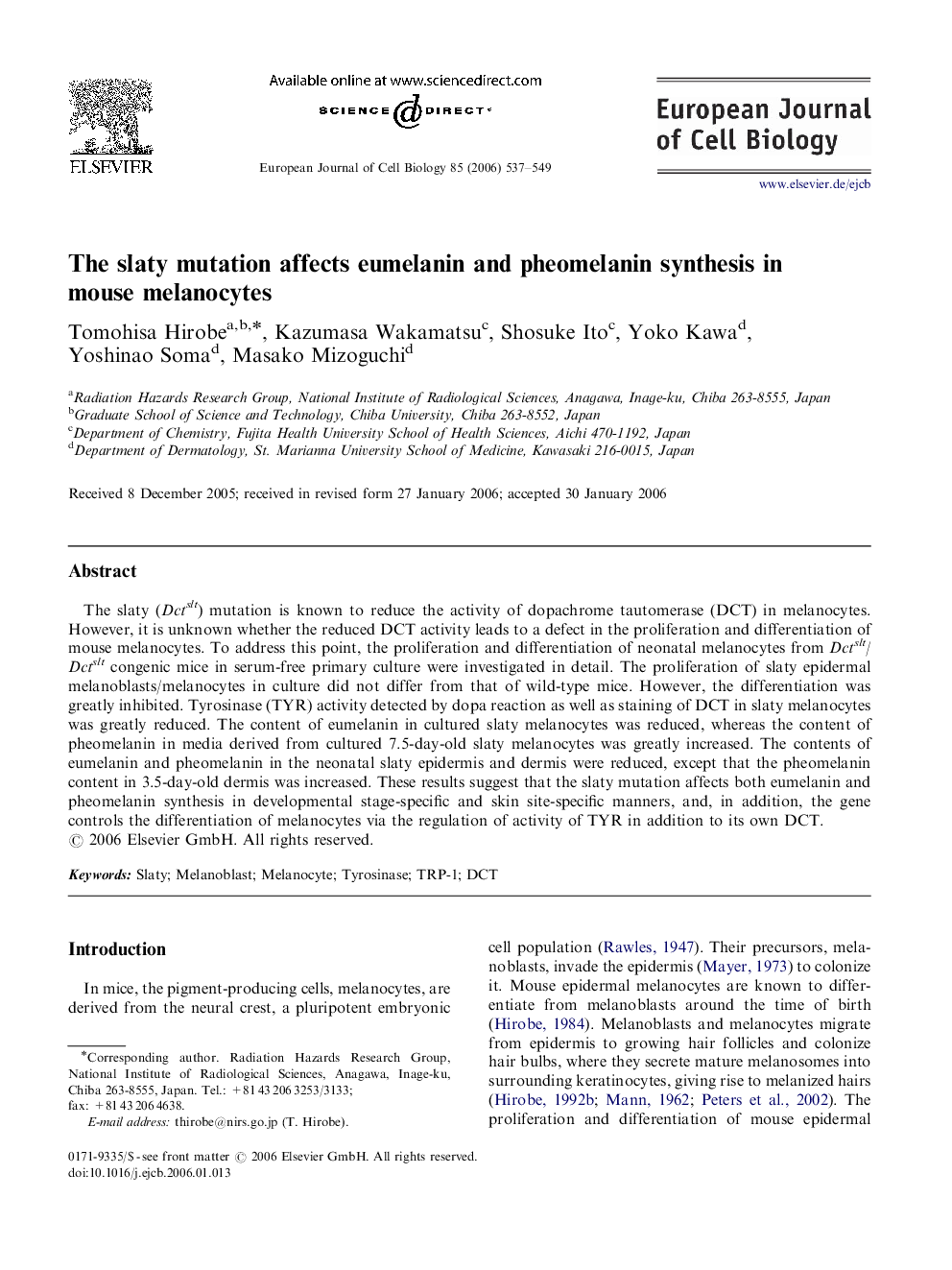| Article ID | Journal | Published Year | Pages | File Type |
|---|---|---|---|---|
| 2179173 | European Journal of Cell Biology | 2006 | 13 Pages |
The slaty (Dctslt) mutation is known to reduce the activity of dopachrome tautomerase (DCT) in melanocytes. However, it is unknown whether the reduced DCT activity leads to a defect in the proliferation and differentiation of mouse melanocytes. To address this point, the proliferation and differentiation of neonatal melanocytes from Dctslt/Dctslt congenic mice in serum-free primary culture were investigated in detail. The proliferation of slaty epidermal melanoblasts/melanocytes in culture did not differ from that of wild-type mice. However, the differentiation was greatly inhibited. Tyrosinase (TYR) activity detected by dopa reaction as well as staining of DCT in slaty melanocytes was greatly reduced. The content of eumelanin in cultured slaty melanocytes was reduced, whereas the content of pheomelanin in media derived from cultured 7.5-day-old slaty melanocytes was greatly increased. The contents of eumelanin and pheomelanin in the neonatal slaty epidermis and dermis were reduced, except that the pheomelanin content in 3.5-day-old dermis was increased. These results suggest that the slaty mutation affects both eumelanin and pheomelanin synthesis in developmental stage-specific and skin site-specific manners, and, in addition, the gene controls the differentiation of melanocytes via the regulation of activity of TYR in addition to its own DCT.
